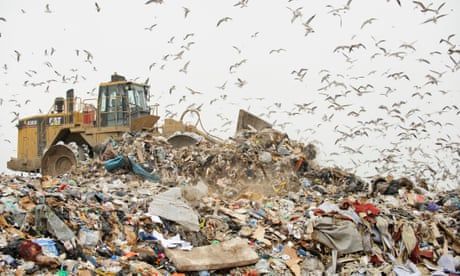
Toxic emissions, health risks and leaching pollution – better management of landfill sites is a matter of urgency
Last summer, people living around the perimeter of Pilsworth South landfill in Bury, Greater Manchester, couldn’t open their windows because of the elevated levels of hydrogen sulphide in the air. Referred to as “sewer gas”, its rotten-egg stench can be particularly unbearable at night. Even driving past with the windows closed on the M66, as I do regularly to drop my child at a local play centre, I have gagged at the overpowering smell.
Including Pilsworth, there are 15 odorous landfills across the UK. Hafod landfill in Wrexham is the latest to hit the headlines. Another in Northern Ireland was so noxious before its decommissioning that it was subject to a supreme court ruling and now an appeal. Meanwhile, several others have breached their licences through overtipping, odour issues or poor management, forcing them to undertake engineering solutions to rectify the problems. These remedial works can make things worse in the short term, with smells created when rubbish is disturbed.
Continue reading...